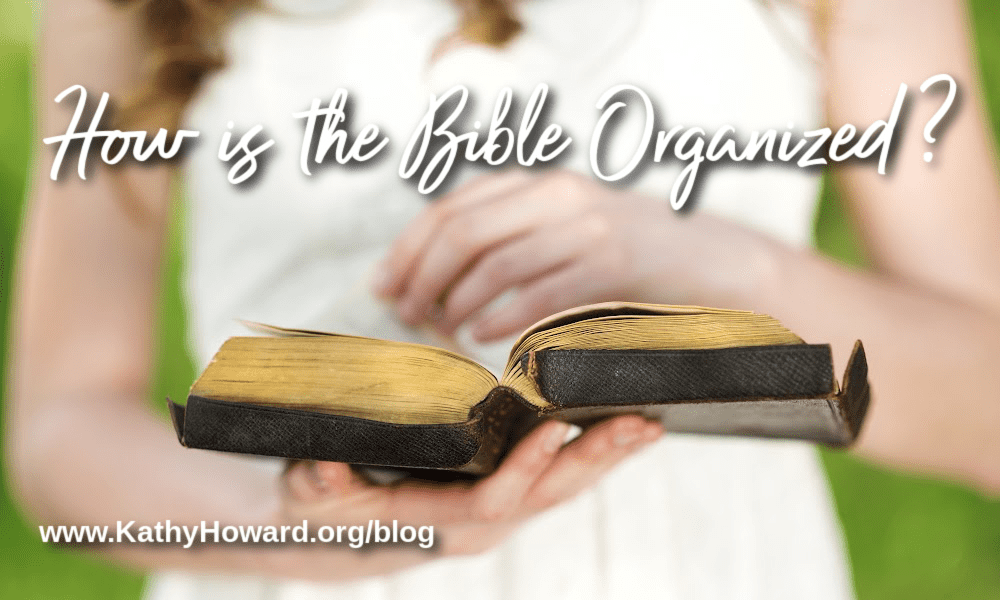
It’s not only those who are new to the Bible that have questions about how it’s put together. With a little looking some things seem to make sense. Like the story of creation being at the beginning and the end of human history coming at the end. But other things just don’t seem logical.
So, just how is the Bible organized? And how do we find what we’re looking for? In the following sections we will work our way down from the largest divisions to the smallest.
The Bible is Organized into Two Testaments
The Bible is divided – not evenly mind you – into two primary sections. The Old Testament and the New Testament. There are 66 books in the Bible – 39 in the Old Testament and 27 books in the New Testament. Historically, there is a break of 400 years between the Old and the New Testaments.
The English word “testament” means “covenant” or agreement. The books of the Old Testament cover God’s covenant agreement through Moses with the people of Israel. But they also point to the new covenant to come through the Messiah. The books of the New Testament share the new eternal covenant of salvation God provides through Jesus. (Also see “6 Reasons to Read and Study the Old Testament.”)
Categories of the Old Testament
It might seem logical for the Old Testament to be arranged chronologically. But instead it is arranged categorically, by the type of literary genre of the books. (For more on biblical genre see “8 Tips for Handling Different Biblical Genres.”) The 39 books of the Old Testament are divided into five categories:
- Law (or Pentateuch) – The five books in this group, from Genesis through Deuteronomy, include the story of creation, the Jewish patriarchs, the Exodus, and the giving of the Law.
- History – The twelve historical books (Joshua through Esther) covers Israel’s entry into the Promised Land, the periods of the judges and kings, the time of the exile, and the re-establishment of the Jews in Jerusalem.
- Poetry and wisdom – These five books are Job, Psalms, Proverbs, Ecclesiastes, and Song of Solomon.
- Major Prophets – The five books of the major prophets – Isaiah through Daniel – are categorized as “major” because of their length, not their importance.
- Minor Prophets – Conversely, the twelve books of the minor prophets – Hosea through Malachi – are just shorter, not less significant!
The ministry of the various prophets spanned a period of more than 300 years, from the time of the kings through the post-exilic period. Some overlapped each other. (For a bit more explanation of the organization of The Old Testament see “How is the Old Testament Organized?”)
Categories of the New Testament
Like the Old Testament, the New Testament is organized by categories instead of chronologically. But these categories are a bit different.
- Gospels – The four Gospels – Matthew, Mark, Luke, and John – tell the story of Jesus. His incarnation, His ministry and teaching, and His work on the cross. The Gospels are a unique blend of history and Jesus’ theological teaching. (See also “Four Tips for Understanding the Gospels.”)
- History – The book of Acts tells the history of the beginning of the church and the spread of the Gospel.
- Pauline Epistles – These 13 letters, written by the apostle Paul, includes letters to 9 churches and 4 individuals.
- General Epistles – These 8 letters were written by a variety of biblical authors including the apostle Peter and John.
- Apocalyptic – The book of Revelation is an exciting and fitting end to the canon of Scripture. But its literary genre does make it notoriously difficult to understand.
(For more on the organization of the New Testament see “How is the New Testament Organized?”)
The Bible is Organized by Chapters and Verses
Every Bible book is divided into chapters, then each chapter is further divided into verses. With this reference system we can go directly to any specific point in the Bible. For instance, the reference John 3:16 takes us to the Gospel of John, chapter three and verse 16. There we read the well-loved verse: “For God so loved the world, that He gave His only Son, the whoever believes in Him should not perish but have eternal life.”
But this reference system did not always exist. The biblical authors did not include divisions of any kind when they wrote. Over time, different individuals began to develop divisions to make specific sections easier to find. But the full reference system we conveniently use today -chapter and verse – wasn’t fully developed in the English Bible until 1560 AD. (For more on the history of references see “The Origin of Verse Divisions.”)
This reference system is necessary for navigation. But, it’s important to remember that chapter and verse division weren’t divinely inspired like Scripture. Sometimes they interrupt the flow of thought. Sometimes, in order to get the right context of a passage we need to look past these divisions.
What’s your favorite part of the Bible?? (Also, if you found this post helpful, I’d love for you to share it!)


Titus Bible Study
Join Kathy's mailing list to receive a free mini Bible study on the book of Titus.
Success! Check your inbox for the download link.